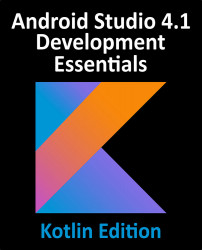52.3 The Floating Action Button (FAB)
The floating action button is a button which appears to float above the surface of the user interface of an app and is generally used to promote the most common action within a user interface screen. A floating action button might, for example, be placed on a screen to allow the user to add an entry to a list of contacts or to send an email from within the app. Figure 52-1, for example, highlights the floating action button that allows the user to add a new contact within the standard Android Contacts app:

To conform with the material design guidelines, there are a number of rules that should be followed when using floating action buttons. Floating action buttons must be circular and can be either 56 x 56dp (Default) or 40 x 40dp (Mini) in size. The button should be positioned a minimum of 16dp from the edge of the screen on phones and 24dp on desktops and tablet devices. Regardless of the size, the button must contain an...



